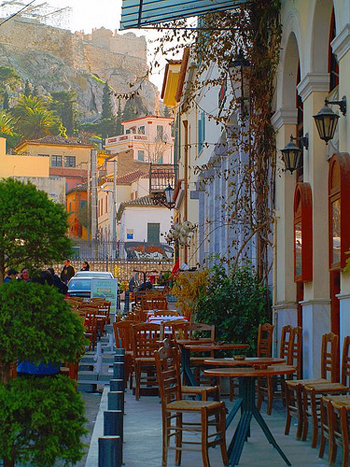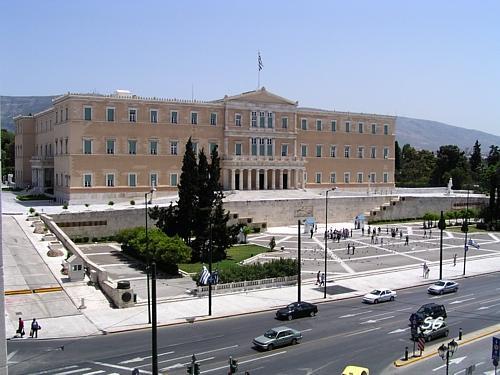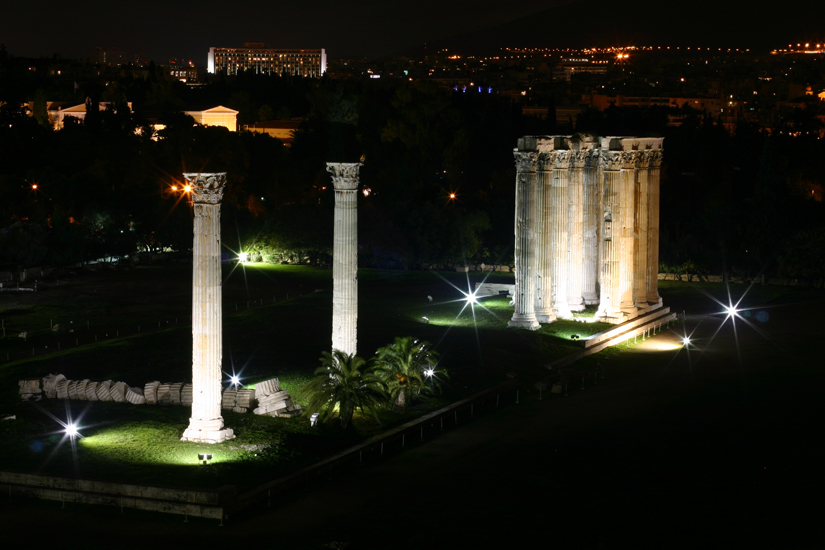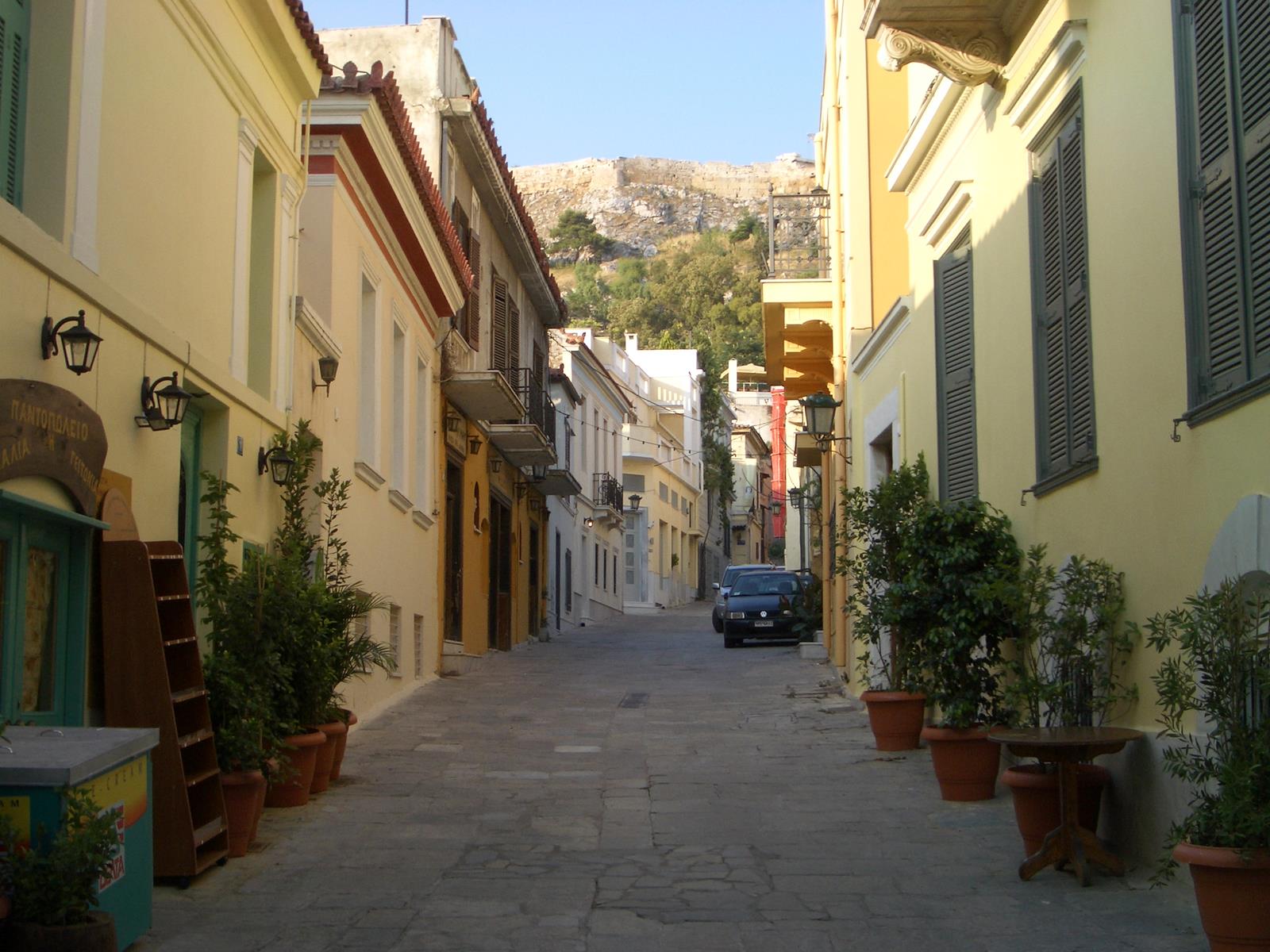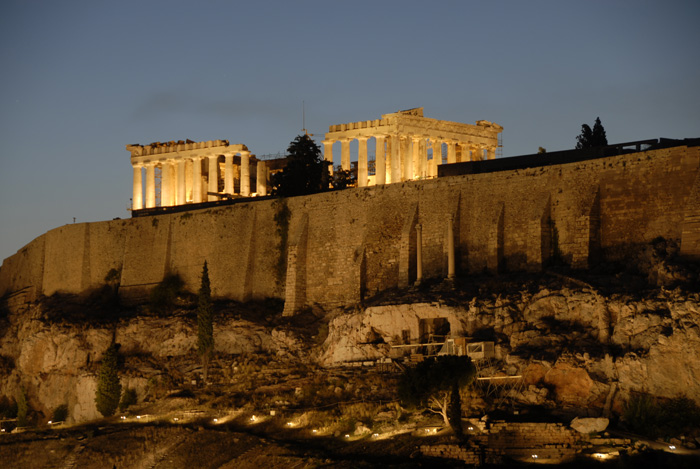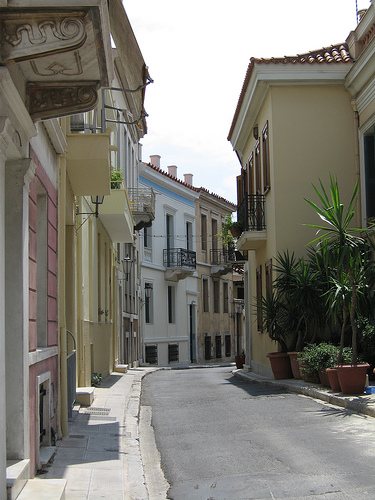Sightseeings
Acropolis (entrance of Acropolis)
Spread throughout a vast area the Acropolis of Athens is an example of a smooth integration between a natural site and a man-made construction; a cluster of monuments built at top of a rock of roughly 30.000 sq.m. The most famous among them is the temple of Parthenon which was created (447 – 442 B.C) to honor the goddess Athena. Considered among the greatest monuments of western civilization.
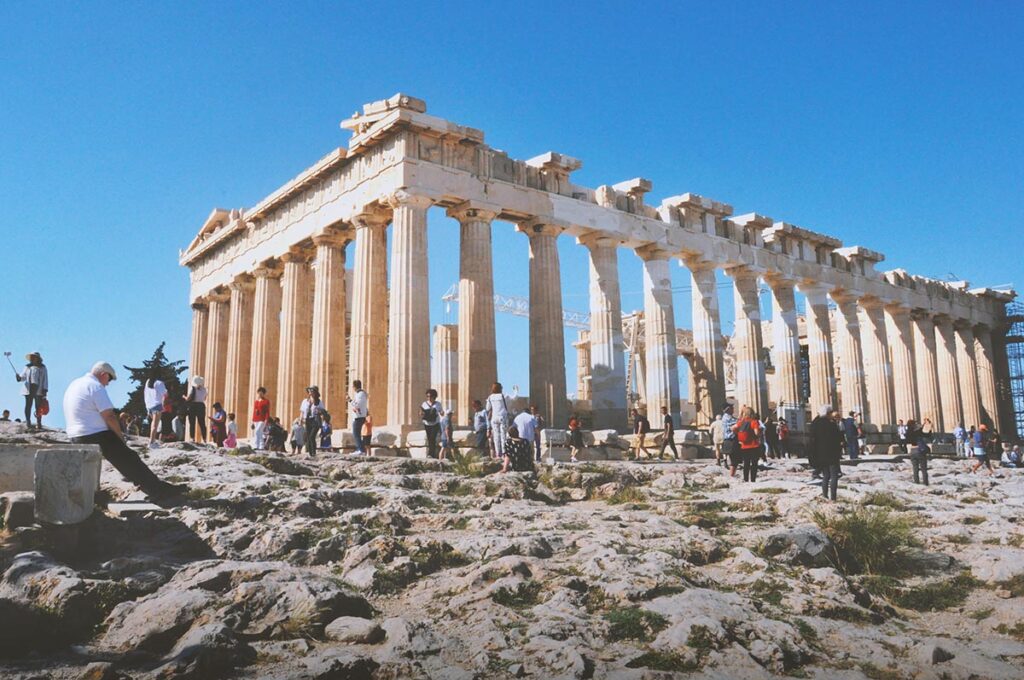
0,6 Klm
The New
Acropolis Museum
Under the sacred rock of Acropolis stands a spectacular museum with a mission: To house all the surviving antiquities from the Acropolis, under one roof of international stature. Located on Dionysiou Areopagitou str. This new museum is by far the most popular museum in the city, as its treasures include more than 50,000 pieces unearthed during excavations in Athens.
0,7 Klm
Plaka
district
Around Acropolis lies Plaka, the oldest and the most picturesque quarter of Athens. Plaka is essentially the “Old Town” built under the shadow of the Acropolis hill it will carry you back in time with its small houses, neoclassical buildings, and pedestrianized roads. The area is full of small shops with souvenirs and traditional tavernas.
0,15 Klm
New National Museum
of Contemporary Art, Athens
The National Museum of Contemporary Art, Athens (EMST) began its operation in 2000. Permanent home of the Museum is the former Fix brewery on Syngrou Avenue, the reconstruction of which was completed in February 2014. The building occupies 18.142 sqm on a 3.123 sqm surface. The Museum’s collection is formed around a very important nucleus of works by Greek and foreign artists. And it’s all accessible art, art that you can approach, move around, walk through, even touch.
It is one of the most characteristic quarters of the old Athens. Narrow streets and small buildings that date back to Byzantine and Ottoman period. It’s where a visitor experiences the hustle and bustle of the flea market.
A green area south west of the Acropolis known in the ancient times as the Hill of the Muses. It is a favorite promenade of the Athenians and from there you can have great views of the Acropolis, the whole city of Athens and the Aegean Sea that surrounds Attica. In 115 AD a monument dedicated to the exiled Roman Prince Gaius Julius Antichus Philopappos of Commagene was erected on top of the hill.
The Ancient Agora (gathering place) was the heart of public life in Athens, a large, open square that acted as forum for social, political, commercial and cultural activity. This literally the birth place of Athenian Democracy.
This temple represents a number of different periods of Athenian history. It’s construction begun in the 6th century BC under the tyrants Hipias and Hyparchos, at the exact locations where lay the ruins of an earlier temple built by their father, the tyrant Pisistratus. It remained unfinished, until the Roman governor Hadrian completed it centuries later, in 132 AD. Originally enormous by ancient standards, today only fifteen of it’s 104 columns are still standing. A sixteenth column lies on the ground where it fell during a storm in the 19th century.
One of the world’s oldest theatres, the Theatre of Dionysus, the god of win and fertility, lies on the South Slop of the rock of the Acropolis. The works of the three dramatists, Aeschylus, Sophocles, and Euripides were performed here. Also found here is the Odeon of Herodes Atticus, established in 161 AD by the Athenian magnate Herodes Atticus in memory of his wife. The Amphitheatre was restored in the 1950s, using white marble from the Penteliko Mountain. Since them it has been the main venue of the Athens festival and has featured performances by main famous Greek and international artists and performers.
Overlooking Syntagma square, it was originally the Royal Palace of King Otto and Queen Amalia, the first monarchs of Greece. Designed in the neoclassical style by the Friedrich Von Gartner, the palace was completed in 1843. It was used as the Royal Residence until 1924 and, since 1934, has housed the Greek Parliament.
Created and designed by Queen Amalia in the 19th century, the National Gardens provide a pleasant green haven in the heart of bustling downtown Athens. Its meandering bench-laden paths, cool trees and popular ponds, make a favorite stroll for everyone.
It is by far the largest archeological museum in Greece. A true panorama of Greek civilization from the beginnings of Prehistory to late Antiquity. It was founded at the end of the 19th century to house and protect antiquities from all over Greece thus displaying their historical, cultural and artistic value.
Discover Stavros Niarchos Foundation Cultural Centre (SNFCC), a contemporary athenian landmark designed by renowned architect Renzo Piano. It is an impressive cultural, educational and recreational complex that encompasses the National Opera, the National Library and a 42-acre park.
- Nearest Metro stop Syngrou-Fix 0,4 Klm (4 minutes on feet)
- Nearest bus stop to National Archeological Museum 50 meters (1 minute on feet)
- Nearest bus stop to Cape Sounio beach and Temple of Poseidon 0,4 Klm (4 minutes on feet)
- Nearest Tram stop to south cost beaches of Attica 0,4 Klm (4 minutes on feet).
- New National Museum of Contemporary Art Athens “ΕΜΣΤ” 0,15 Klm – 150 meters.
